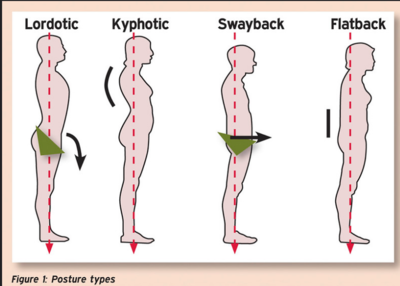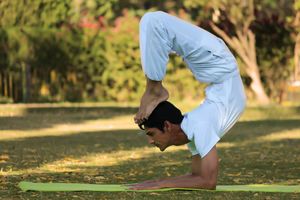Posture
- It is an important part of your long-term health.
Good posture is about more than standing up straight so you can look your best.
- It is an important part of your long-term health.
- Making sure that you hold your body the right way, whether you are moving or still, can prevent pain, injuries, and other health problems.
Meaning
What is posture?
Posture is defined as the attitude assumed by the body either with support during the course of muscular activity, or as a result of the coordinated action performed by a group of muscles working to maintain the stability.
There are two types.
- Dynamic posture A) is how you hold yourself when you are moving, like when you are walking, running, or bending over to pick up something. B) It is usually required to form an efficient basis for movement. C) Muscles and non-contractile structures have to work to adapt to changing circumstances.
- Static posture A) is how you hold yourself when you are not moving, like when you are sitting, standing, or sleeping. Body segments are aligned and maintained in fixed positions. B) This is usually achieved by co-ordination and interaction of various muscle groups which are working statically to counteract gravity and other forces.[3]
Proper posture guides
The following guidelines describe good posture when standing, sitting, and lying down:
Standing
- Stand with your feet flat on the floor, shoulder width apart.
- Stand tall, as if a string is pulling upward from your head, and let your arms relax by your sides.
- Pull your belly button gently toward your spine.
- Keep your chin parallel with the floor.
Sitting at a desk or table
- Sit with your back straight and shoulders back.
- Keep your feet flat on the floor. Do not cross your legs or ankles.
- Rest your forearms on the table while keeping your shoulders back.
- Your chin should be parallel to the floor, and your ears should align with your collar bone.
Lying down
People can have good posture while lying on their back or side. Make sure to keep the spine aligned and avoid twisting at the waist. Placing a pillow underneath or between the legs can help relieve back pain.
People should avoid sleeping on their stomachs because this position forces the neck to twist, putting excessive stress on the neck, shoulders, and back.
Posture and Health
Poor posture can be bad for your health. Slouching (see image at R) or slumping over can
- Misalign your musculoskeletal system
- Increase pressure on the spine, making it more prone to injury and degeneration
- Cause neck, shoulder, and back pain
- Decrease flexibility
- Affect how well joints move
- Affect balance and increase risk of falling
- Make it harder to digest food
- Make it harder to breathe[4]
- The Relationship Between Posture and Pain[5][6][7][8] There are many theories that bad posture is a contributing factor in low back pain, some studies have shown that improved posture and postural control can have a positive effect on pain.
Some of the examples of faulty posture can be as follows:
 |
- Lordotic posture- Lordosis refers to the normal inward curvature of the spine. When this curve is exaggerated it is usually referred to as hyperlordosis. The pelvis is usually tilted anteriorly.
- Sway Back Posture- In this type of posture, there is forward head, hyper-extension of the cervical spine, flexion of the thoracic spine, lumbar spine extension, posterior tilt of the pelvis, hip and knee hyper-extension and ankle slightly plantarflexed.
- Flat back posture- In this type of posture, there is forward head, extension of the cervical spine, extension of the thoracic spine, loss of lumbar lordosis and posterior pelvic tilt.
- Forward head posture - Describes the shift of the head forward with the chin poking out. It is caused by increased flexion of the lower cervical spine and upper thoracic spine with increased extension of the upper cervical spine and extension of the occiput on C1.
- Scoliosis - A deviation of the normal vertical line of the spine, consisting of a lateral curvature and rotation of the vertebrae. Scoliosis is considered when there is at least 10° of spinal angulation on the posterior-anterior radiograph associated with vertebral rotation[12]. This is a 3 dimensional C or S shaped sideways curve of the spine.
- Kyphosis - An increased convex curve observed in the thoracic or sacral regions of the spine.
Maintaining proper posture requires adequate muscle strength, joint motion, and balance, according to the American Chiropractic Association.
The following exercises focus on increasing muscle strength and flexibility for better posture.
Bridges
Bridges help strengthen the gluteal and abdominal muscles, which helps relieve excess stress in the lower back.
To do a bridge:
- Lie on your back with your knees bent and feet flat on the floor.
- Lift your hips by engaging your core and buttocks muscles. The buttocks and lower back should raise off the ground.
- Gently lower back down to the starting position.
Plank
Plank Pose helps improve posture by strengthening muscles in the shoulders and back as well as the core, glutes, and hamstrings. It also encourages proper alignment of the spine.
To plank:
- Get down onto your hands and knees. Make sure that your hands align with your shoulders and your knees align with your hips.
- Come onto the balls of the feet by lifting your heels and straightening your legs. The body should form a straight line.
- Keep your chest open and shoulders back.
- Hold this position for 30–60 seconds.
Hip flexor stretch
This stretch gently opens the hips and improves balance and coordination, which can help improve posture.
To do a hip flexor stretch:
- Kneel with your right knee on the ground.
- Place your left foot in front and bend your knee at a 90-degree angle.
- Keep your back straight, chest forward, and head upright.
- Place both hands on your left thigh.
- Gently press your hips forward and hold the position for 20–30 seconds.
- Repeat this stretch on the right side.
Mountain Pose
Tadasana, or Mountain Pose, is a simple yoga position that can help improve posture. Mountain Pose focuses on upright body alignment, and it incorporates several aspects of good posture.
To do Mountain Pose:
- Stand upright with the feet hip width apart.
- Make sure to spread your weight evenly through both feet. Try gently rocking forward and backward to feel how variations in weight distribution affect posture.
- Keep a slight bend in your knees, squeeze your thighs, and tilt your tailbone down.
- Drop your shoulders down and back, so your chest comes forward
- Keep your shoulders relaxed and allow your arms to fall to the sides of the body with your palms facing forward.
- Inhale and exhale slowly for a few breaths.
Child’s Pose
This yoga pose lengthens the lower back and opens the hips. People can use Child’s Pose as a resting position during yoga or other forms of exercise or as part of their regular stretching routine.
To do Child’s Pose:
- Get down onto your hands and knees.
- Gently lean your body backward, keeping your hands in the same position.
- Continue leaning back until your forehead touches the floor.
- Your arms should make a straight line and your buttocks should rest on your heels.
- Keep your arms straight and shoulders relaxed.
Placing a mat or towel on the floor can make this pose more comfortable.









Thank you
ReplyDelete